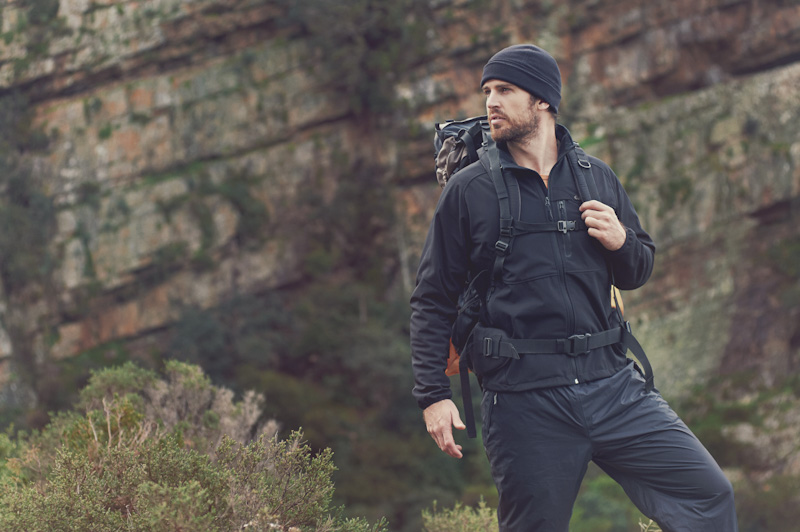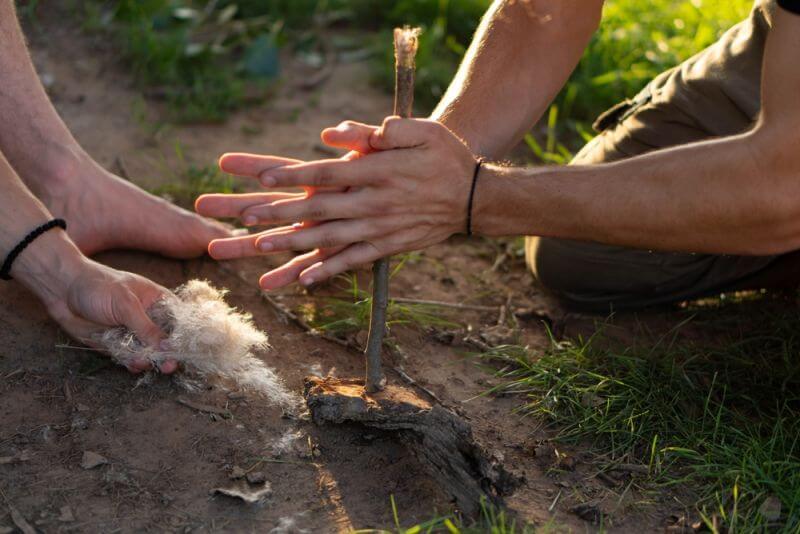After succumbing to the allure of solo camping and hiking, I discovered that if your hiking companions are unable to meet the challenges you seek, you may have to embark on your adventures alone. Drawing from my personal experience, I can offer valuable advice to those aspiring to venture solo into the great outdoors.
The world of outdoor exploration is a treacherous path that can become addicting in its own way. It starts innocently enough, with a two-hour day walk that proves to be quite demanding for beginners. Suddenly, you find yourself on a 10-day solo hiking expedition, equipped with a bivvy bag, a stack of topo maps, and a solar charger to ensure your iPad or iPhone remains powered throughout the journey.
Initially, I held the belief that overnight hikes were reserved for the most resilient individuals. However, curiosity compelled me to give it a try, and although I initially set my limits there, I inevitably found myself pushing boundaries and embarking on extended 10-day hikes. Finding companions willing to hike for such extended periods, particularly during national holidays, proved challenging for me.
In my previous solo hiking endeavors, the experience often felt less solitary due to the encounters with numerous people along the way, resulting in impromptu groups forming. However, I eventually ventured onto more secluded trails at the suggestion of a friend who doubted my capability to navigate them alone. “You won’t be able to carry all your gear,” he claimed. Yet, I proved him wrong and embarked on a transformative journey that remains etched in my memory, prompting me to repeat it time and again.
The desire for solo hiking intensified when I realized I was often the one organizing our family trips from start to finish. Planning the route, conducting research, determining intentions, and carrying essential gear fell on my shoulders. It dawned on me that if I were alone on the trail, it wouldn’t make much of a difference. Therefore, after numerous hikes and the repetition of such experiences, I have identified five crucial aspects of solo hiking that one should carefully consider.
Safety
When people discover my affinity for solo hiking, their first concern is usually safety. They inquire, “Do you mean safety in terms of accidents, or safety when it comes to dealing with animals and pests in the wilderness?” Surprisingly, it’s almost always the latter. Non-hikers tend to believe that the wilderness is teeming with menacing creatures seeking unsuspecting victims.
For the record, I have yet to encounter any wildlife or pests in the wilderness that pose a significant threat. Accidents, apart from the occasional falling on my ass that can occur regardless of company, have been few and far between.
A crucial aspect of safety, particularly regarding fatigue and hypothermia, lies in self-management. In a group setting, I tend to hesitate to voice concerns or disrupt the flow of the collective to address personal needs. However, when hiking solo, I promptly attend to hunger, thirst, cold, heat, fatigue, or blisters as soon as they arise.
Certain accidents, such as fatal falls, are equally hazardous whether one is alone or accompanied. Statistics demonstrate that going solo does increase the inherent risks. Surprisingly, more than 50 percent of search and rescue operations are conducted for solo hikers, campers, or individuals who became separated from their group during multi-person trips. Therefore, safety becomes your number one responsibility, and it’s up to you to keep yourself alive and safe when exploring the great outdoors.
Decision making
When it comes to hiking, I’m admittedly a slow hiker, but I firmly believe in the old saying that “slow and steady wins the race.” If I attempt to keep pace with others, I find myself exhausted within a few hours, ruining my entire day. However, by maintaining my own steady rhythm, I often surpass trail times effortlessly.
Embarking on solo journeys grants me the freedom to make my own decisions. I am responsible for establishing the route, determining where to stop for the day, and selecting the perfect spot for a lunch break.
During my recent camping trip, I had a long and leisurely day. Early on, I kept my eyes peeled for a suitable campsite, but none caught my fancy. Thus, I continued on, hoping to reach a more secure location for the night.
According to the topo map, there was supposed to be a track leading up over terraces before descending south. However, in reality, no such track existed. By around 5 p.m., having been on the move since 7 a.m., I made the decision to set up camp near a river and unpacked my trusty bivy bag.
Since I hadn’t encountered anyone else throughout the day, I thought it safe enough to indulge in a solitary skinny dip in the river. Luckily, there were no witnesses to my rather comical appearance: plain naked, except for my boots, which I had kept on to protect my feet from the sharp rocks. The following day, I scrambled up the terraces and proceeded across and down my chosen path.
Gender
It’s interesting to note that the first point ties into this notion—I imagine men camping solo rarely face inquiries about safety. It has been my experience that people are often awestruck when they see a woman hiking alone. Personally, I don’t view it as particularly unusual.
However, during various trips, when my wife led the way, and I trailed behind, she encountered several individuals who were genuinely astonished. They repeatedly exclaimed, “You’re amazing!” On other occasions, people approached her to inquire if she was alright or in need of assistance.
In my observation, women who embark on solo camping or hiking expeditions tend to make cautious decisions, carefully considering all factors. I also believe they tend to carry an abundance of food, perhaps more than necessary for their fitness capabilities.
These are generalizations, of course, but I find that women are generally more conservative and well-prepared. Now, don’t get me wrong, there is an evident gender “gap” when it comes to preparedness, survival, and venturing into the wilderness solo. However, ultimately, it boils down to one’s skills and abilities.
When planning a solo camping or hiking trip, it is essential to consider all factors that may present challenges. Self-defense is crucial for everyone, regardless of gender. However, we must also acknowledge that a woman alone in the wilderness may be perceived as an easy target by other campers who may have consumed excessive alcohol or have ill intentions simply because no one else is around.
Loneliness
Aspiring to become a hermit someday, the fear of being alone or experiencing loneliness rarely affects me. I have discovered that the fear of loneliness itself is often worse than the actual reality of solitude. However, during my last trip, I encountered a newfound feeling of loneliness for the first time.
Surprisingly, it didn’t strike me when I was completely by myself, but rather when I found myself at a campsite with a couple who continually chatted. It made me realize that one can feel lonely even in the company of individuals we don’t enjoy.
While walking or foraging, I deeply appreciate the tranquility and silence that accompanies being solo. It grants me the opportunity to sort through the thoughts that occupy my mind, generate new ideas, and even chuckle at my own jokes. I constantly remind myself that finding serenity in today’s fast-paced world is a rare occurrence, and I should seize every opportunity to embrace it.
Every solo camping experience brings about unique and diverse days for me. On some occasions, I simply desire to rest in my hammock and catch up on reading, while on others, I engage in foraging or challenge myself to improve my survival skills by placing myself in demanding situations from which I must extricate myself.
Those who are new to solo adventuring may struggle to acclimate to the feeling of loneliness, seeking distractions to occupy their minds. Others, by nature, are solitary creatures who eagerly yearn to escape civilization and spend as much time as possible in the great outdoors. I find myself to be a blend of both. While I cherish being alone in the wilderness, there are moments when thoughts of my wife and children provoke a gradual sense of loneliness.
Gear
It’s important to mention that when you’re alone, gear can feel heavier. When hiking with others, the weight can be shared, like dividing a jug of water among five people. However, when you’re solo, you’re solely responsible for carrying the load. On my recent trip, I reorganized my gear to include only the bare essentials, but I still carried new equipment that I wanted to put to the test.
Among the items I brought was a solar charger. Its purpose was twofold: recharging my iPhone, which served as my GPS through an app, and charging my Fitbit, which I used as a watch. Sometimes, I reflect on how hiking must have been a simpler affair before the advent of these digital gadgets.
Furthermore, when you’re alone, there is no backup if something breaks or gets lost. From past experiences, I have learned the importance of carrying multi-purpose gear and focusing on the essentials. I only bring items that I am intimately familiar with, and that have never failed me before.
I strictly adhere to a personal rule: I carry some items on my person and others in my backpack. I make sure that even if I were to lose my backpack, I would still be able to find my way back to the campsite. The items in my backpack are more for comfort and to enhance my enjoyment of the trip. However, I am confident that if I were separated from my backpack, I would have no trouble surviving alone in the wilderness.
While I could provide a list of gear to bring when hiking solo, it ultimately boils down to personal preference. You can bring whatever you desire and are capable of carrying as long as you cover the basics of shelter, fire, water, and food. I can guarantee that with increasing experience in the field, you will gradually learn to reduce the weight of your gear and replace it with lighter, less bulky items.
Concluding
I frequently encourage others to venture out on their own and discover their personal boundaries. Going solo entails greater risks, but it also offers greater rewards. You never know when you might find yourself alone in the wilderness, and it is crucial to be confident in your ability to survive without the assistance of others.
By embarking on solo adventures, you can truly test your limits and uncover inner strengths you may not have known existed. It is during these solitary moments that you learn to rely on yourself and face challenges head-on. The experience of self-reliance in the wilderness is incomparable as you become attuned to your instincts and develop a deep sense of resilience.
While going solo increases the potential for danger, it also heightens the sense of accomplishment and self-discovery. The knowledge that you can overcome obstacles and thrive in solitude is a reward in itself. Embracing uncertainties and taking responsibility for your own well-being fosters personal growth and cultivates a profound connection with nature.
So, I urge you to step out into the wild alone, push your boundaries, and explore the depths of your capabilities. The rewards and lessons you will gain from solo adventures are unparalleled, and you will emerge with a newfound confidence and appreciation for the strength that lies within you.










Paul Shultz | July 19, 2023
|
I am avid backpacker. I have been hiking since the 70’s and over the years have enjoyed group and solo hiking. I enjoy solo hiking so much better. It started out with schedule as never able to find someone to get same time off. Safety from wildlife is more of a problem on Western trails. Safety from humans is more Eastern trails. I agree with your comments about solo hiking to hike your own pace and stop to smell the roses as the saying goes. I am slow hiker also and group hiking makes it harder for me to keep up so I will show up in camp last while everyone else is already setup. One tidbit to remember if you group hike. Keep group small for numerous reasons, less impact on environment and less people trying to be in charge to name a few.
radar | July 20, 2023
|
Bob, how do you arrive at your destination’s starting place? Vehicle left in a parking area for, say, 10-days? Has that ever produced a problem upon your return? Do you do what many canoe trekkers do, such as being dropped off at a starting point, then traveling to an end point, where you call for a ride when you are ready? Do you do Sleuth Camping, such as biking to an area, then hiding your bike and exploring that area on foot? Do you hire someone to permit you to park and monitor your vehicle? Do you limit where you go by where you park your vehicle? If you do more than one of these, please share.
Bob | July 22, 2023
|
Hey Radar. So far, I’ve never had any problems with my car, no matter where I’ve left it. I have a beat-up ’96 Bronco that presents no interest, and I usually leave it in a designated parking area. It really depends on what I’m planning to do during my outings, and I usually go as far as I can and circle back to the car.
I’ve also arranged on various occasions with friends or local folks to drop me in the wilderness and pick me up at various ending points. But, as I said, I usually use my own vehicle since I need to carry various gear (sometimes even for testing and reviewing), and it’s much more comfortable to work on my own terms. The location of where my car is parked doesn’t limit my travel, and I don’t care much about it. I go on about my business, and I hope the car will still be there when I come back. 🙂
radar | July 22, 2023
|
Thanks for answering, Bob! Your reply makes good sense! I used to have an old car; but I gave it away. at its age 23. Maybe when my current car gets old, I’ll keep it for the trail. Thanks!